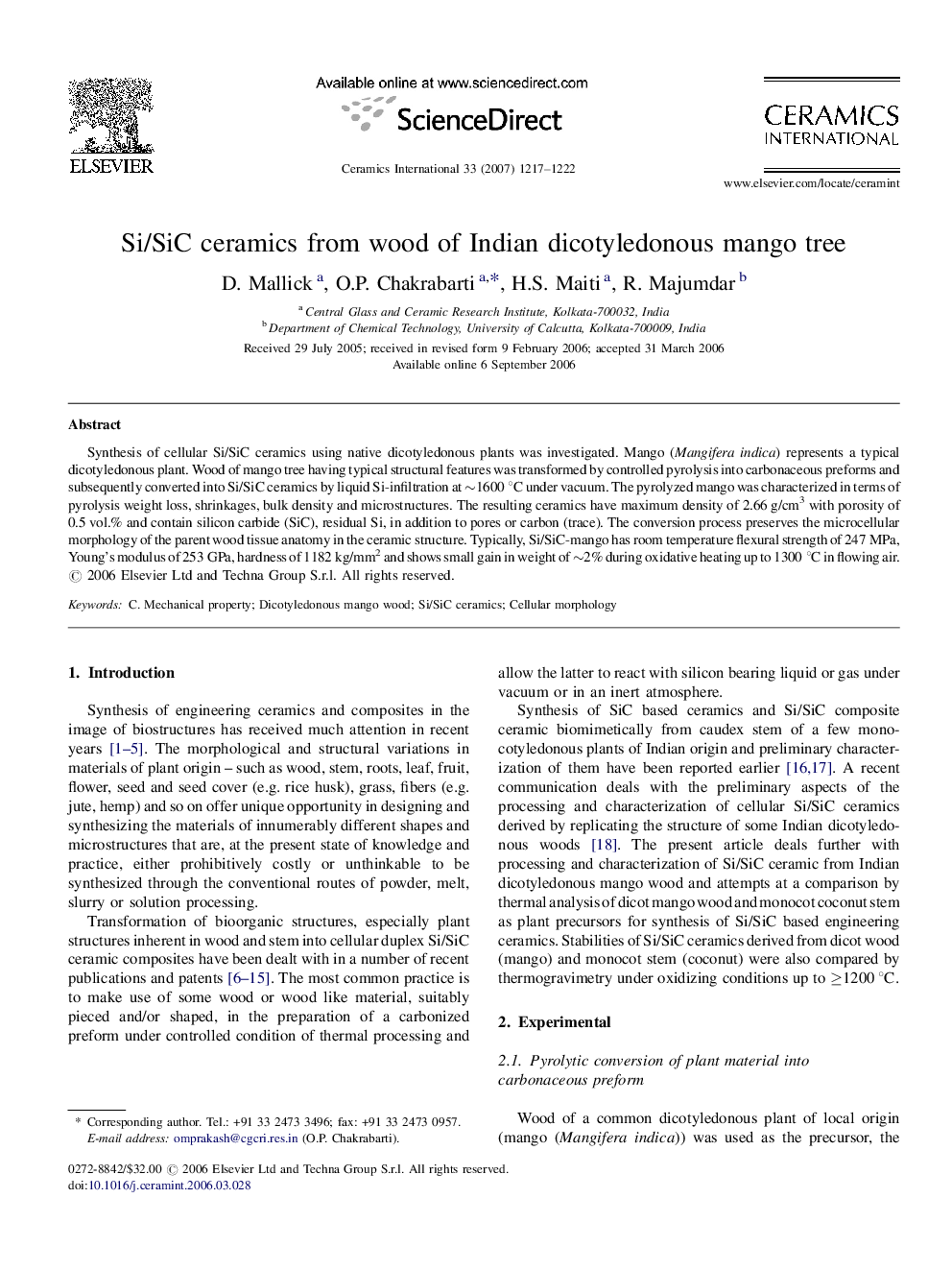| Article ID | Journal | Published Year | Pages | File Type |
|---|---|---|---|---|
| 1465160 | Ceramics International | 2007 | 6 Pages |
Synthesis of cellular Si/SiC ceramics using native dicotyledonous plants was investigated. Mango (Mangifera indica) represents a typical dicotyledonous plant. Wood of mango tree having typical structural features was transformed by controlled pyrolysis into carbonaceous preforms and subsequently converted into Si/SiC ceramics by liquid Si-infiltration at ∼1600 °C under vacuum. The pyrolyzed mango was characterized in terms of pyrolysis weight loss, shrinkages, bulk density and microstructures. The resulting ceramics have maximum density of 2.66 g/cm3 with porosity of 0.5 vol.% and contain silicon carbide (SiC), residual Si, in addition to pores or carbon (trace). The conversion process preserves the microcellular morphology of the parent wood tissue anatomy in the ceramic structure. Typically, Si/SiC-mango has room temperature flexural strength of 247 MPa, Young's modulus of 253 GPa, hardness of 1182 kg/mm2 and shows small gain in weight of ∼2% during oxidative heating up to 1300 °C in flowing air.
